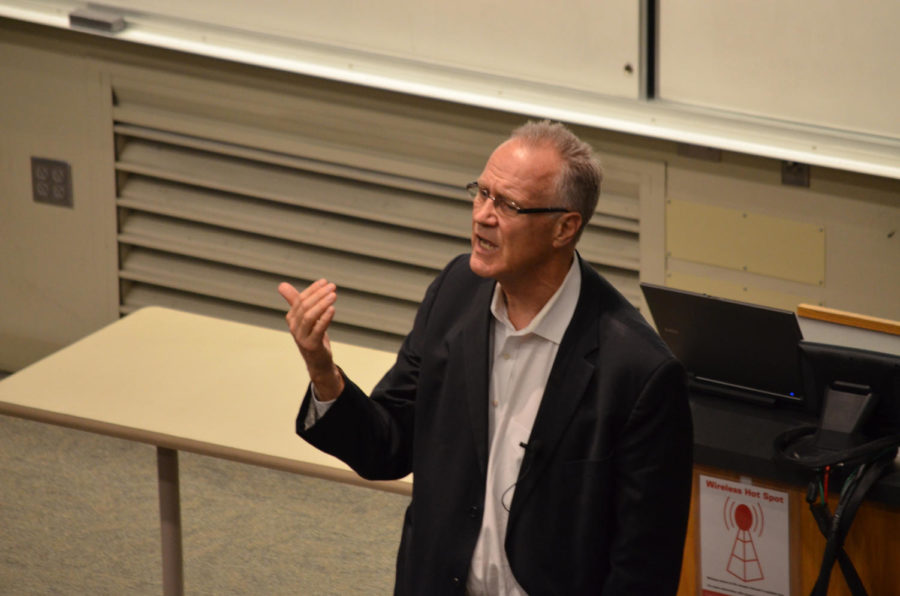University of Missouri professor speaks about race and class
October 9, 2014
People shifted in their seats and shook their heads as the events, and subsequent discussions, of the shooting of Michael Brown in Ferguson, Miss., were relived.
Todd Swanstrom, E. Desmond Lee professor of community collaboration and public policy administration at the University of Missouri, St. Louis, spoke about the issues of race and class, in relation to the August shooting in Ferguson, Oct. 8 in the Memorial Union.
“Add to this, race in Ferguson,” Swanstrom said. “Two-thirds of the population is African American. The mayor is white. Five out of the six council members are white, and 50 out of 53 police officers are white.”
There are about 250,000 warrants for arrest out in St. Louis County, Swanstrom said.
Swanstrom addressed the audience with this question: Why has the police force in Ferguson become this way?
In concentrated poverty, police are more likely to try to get money through stopping people for going a little over the speed limit or rolling a stop sign, Swanstrom said.
“They are going after, in some cases, some of the most vulnerable people in the city to finance their local budget,” Swanstrom said. “In the case of Ferguson, 25 percent of the budget comes from traffic fines and court fees.”
Swanstrom also said there is an abundance of warrants out because the people who get fined can’t pay those fines, so they don’t go to the court date. Not going to the court date gets them arrested, at which point they are then charged processing and jailing fees.
“You have white officers who don’t live in the community usually. [They] are not well-paid because Ferguson is not a ‘well-to-do’ municipality,” Swanstrom said. “They’re not well trained. They have no sensitivity training, and they’re told to go out make as much money as they can from people from these traffic court fees.”
Swanstrom said this is where racial profiling begins.
“What they do is look for people with arrest warrants out. So they look for someone with an old car, look like they’re ‘low income’ or they happen to be African American and a young male, they’ll most likely have a warrant out for them, right?” he asked the audience.
The media has concentrated on the race element, and this is important, Swanstrom said.
All people are being disrespected and discriminated against when it comes to high concentrated areas of poverty, he said.
Swanstrom went into detail about a plan to help level the playing field when it comes to class division. He said poverty stricken suburbs need basic living necessities like supermarkets, easy access to public transportation and a mixture of people in different financial classes.
Miles Brainard, senior in community and regional planning, said the racism seen on campus is more subtle.
“People tend not to notice it, or to ignore it when they do see it,” Brainard said.
While Iowa State does seem diverse, Brainard said he still hears some blatant racism around campus.
“We have a very large Chinese student population that people speak very disparagingly about,” he said.
He also said there is not a lot of outreach to these students from the rest of the student body.
Victoria Fanibi, a freshman in community and regional planning, said Swansrtom’s presentation gave her new perspective on how the makeup of St. Louis has changed where more wealthy people are and whether or not they’re open to change.
Swanstrom discussed how powerful figures come to poverty-stricken places and tell them what they want to fix but how they often don’t relate to the problem.
Fanibi agreed when she gave an example of a figure misreading the Ferguson incident and said, “‘Let’s make a change on black-on-black crime’. No, let’s just talk about what we can do to fix the situation.”
While it’s still unknown how the situation in Ferguson will be solved, Swanstrom said it needs to start with improving the qualities of life for all people in the St. Louis county area.

















